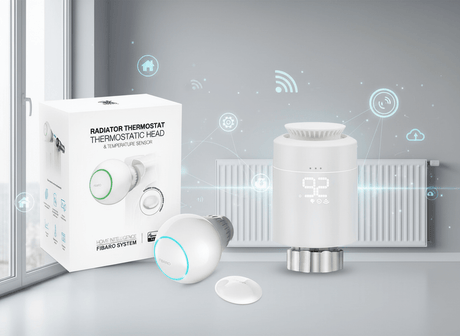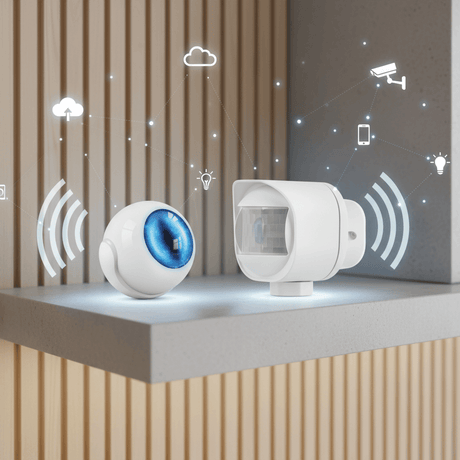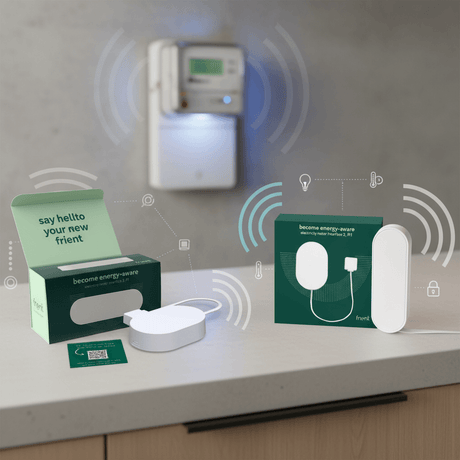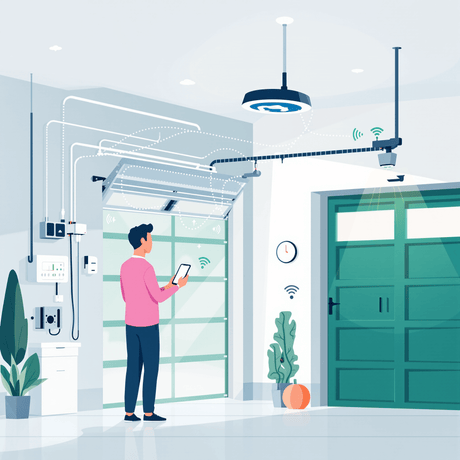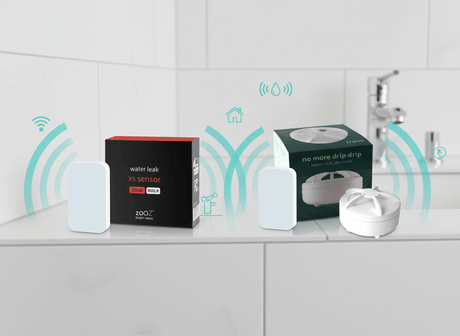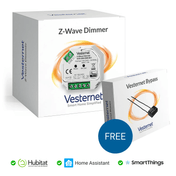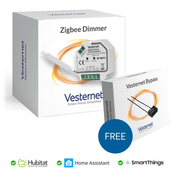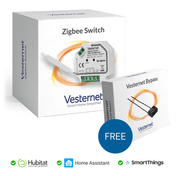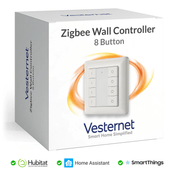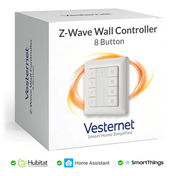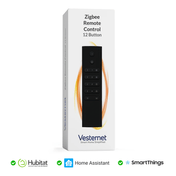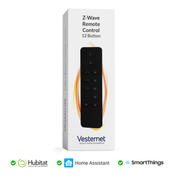Moderne Smart Homes haben sich zu hochentwickelten Ökosystemen entwickelt, die aus Dutzenden miteinander verbundener Geräte bestehen, von intelligente Thermostate und Sicherheitskameras bis hin zu automatisierter Beleuchtung und Sprachassistenten. Diese Komplexität erfordert eine robuste Netzwerkinfrastruktur, die eine nahtlose Konnektivität über mehrere drahtlose Protokolle hinweg zuverlässig unterstützt und so eine optimale Leistung für jede Smart-Home-Komponente in Ihrem Gebäude gewährleistet.
Die perfekte Lösung für diese Komplexität ist die Planung eines ganzheitlichen Heimnetzwerk-Hubs. Er bietet zentrale Steuerung, verbesserte WLAN-Abdeckung und reduziert Interferenzen zwischen konkurrierenden Geräten. Professionelle Netzwerk-Hub-Planung verwandelt fragmentierte Smart-Home-Systeme in zusammenhängende, effiziente Netzwerke, die eine konstante Leistung bieten und gleichzeitig zukünftigen Erweiterungsanforderungen gerecht werden.
Dieser umfassende Leitfaden bietet Strategien für die Planung, Implementierung und Optimierung der gesamten Heimnetzwerkinfrastruktur. Von der Durchführung gründlicher Standortanalysen bis hin zur Konfiguration erweiterter Gateway-Hubs, entdecken Sie praktische Techniken zum Erstellen skalierbarer Netzwerkgrundlagen, die die Erweiterung von Smart-Home-Ökosystemen mit Zuverlässigkeits- und Leistungsstandards auf professionellem Niveau unterstützen.
Grundlagen der Smart-Home-Netzwerkarchitektur verstehen
Die Smart-Home-Netzwerkarchitektur besteht aus mehreren miteinander verbundenen Schichten, die zusammenarbeiten, um eine nahtlose Gerätekommunikation und -steuerung zu ermöglichen. Im Kern basiert ein gut konzipiertes System auf Gateway-Hubs, die als zentrale Kommandozentralen fungieren und die Kommunikation zwischen Geräten orchestrieren, die mit unterschiedlichen Funkprotokollen arbeiten, darunter

Zu den wesentlichen Komponenten der Netzwerkinfrastruktur gehören:
- Zentraler Gateway-Hub für einheitliche Geräteverwaltung und Protokollübersetzung
- Mesh-Netzwerktopologie gewährleistet redundante Kommunikationspfade für mehr Zuverlässigkeit
- Range Extender und Repeater sorgen für eine starke Signalabdeckung auf dem gesamten Grundstück
- Netzwerksegmentierung trennt den Smart-Home-Verkehr von der allgemeinen Internetnutzung
Das Verständnis dieser architektonischen Prinzipien ermöglicht es Hausbesitzern, fundierte Entscheidungen bei der Planung ihres gesamten Hauses zu treffen.
Umfassende Netzwerkplanung und Standortbewertung
Eine professionelle Standortanalyse bildet die Grundlage für eine erfolgreiche Implementierung eines Heimnetzwerks. Sie identifiziert potenzielle Abdeckungslücken, strukturelle Störfaktoren und optimale Platzierungsorte für Netzwerkinfrastrukturkomponenten. Dieser systematische Bewertungsprozess stellt sicher, dass Ihre
Kritische Bewertungsfaktoren für die Netzplanung:
- Baumaterialien und Strukturelemente, die die Ausbreitung von Funksignalen beeinflussen
- Vorhandene elektromagnetische Störungen durch Haushaltsgeräte und elektronische Geräte
- Aktuelle und geplante Standorte von Smart-Geräten, die eine Netzwerkverbindung erfordern
- Zukünftige Ausbaugebiete, in denen zusätzliche Netzabdeckung benötigt wird
Durch detaillierte Standortkarten werden visuelle Pläne erstellt, die Signalstärkemuster, Funklöcher und optimale Hub-Standorte zeigen. Diese Dokumentation dient als Referenz während der Installation und bietet wertvolle Hinweise für zukünftige Netzwerkänderungen oder -erweiterungen. So bleibt Ihre Netzwerkinfrastruktur auch bei wachsendem Smart-Home-Ökosystem leistungsfähig.
Gateway-Hub-Auswahl und Multiprotokoll-Integration
Die Wahl des passenden Gateway-Hubs bestimmt die Leistungsfähigkeit, Kompatibilität und das zukünftige Erweiterungspotenzial Ihres Smart-Home-Netzwerks. Moderne Hubs müssen mehrere drahtlose Protokolle gleichzeitig unterstützen und gleichzeitig intuitive Verwaltungsoberflächen und robuste Sicherheitsfunktionen für eine umfassende Smart-Home-Steuerung bieten.
Berücksichtigen Sie bei der Installation eines Hive Hubs oder ähnlicher Multiprotokoll-Gateways die Kompatibilität mit vorhandenen Geräten und zukünftigen Smart-Home-Erweiterungsplänen. Premium-Hubs bieten erweiterte Funktionen wie automatisiertes Mesh-Netzwerkmanagement, Protokoll-Bridging-Funktionen und Cloud-basierten Fernzugriff für umfassende Systemüberwachung und -steuerung.

Wichtige Auswahlkriterien für Gateway-Hubs:
- Multiprotokoll-Unterstützung gewährleistet Kompatibilität mit
Z-Wave ,Zigbee , UndWiFi Geräte - Ausreichende Verarbeitungsleistung für die effiziente Verwaltung großer Gerätenetzwerke
- Lokale Speicherfunktionen für Automatisierungsregeln und Gerätedaten
- Professionelle Sicherheitsfunktionen zum Schutz vor Netzwerkschwachstellen
- Skalierbare Architektur, die Hunderte von verbundenen Smart-Geräten unterstützt
Strategien zur Optimierung der Mobilfunkabdeckung
Um eine umfassende WLAN-Abdeckung zu erreichen, ist eine strategische Platzierung der Netzwerkinfrastrukturkomponenten und eine sorgfältige Optimierung der Übertragungsparameter erforderlich. Professionelle Optimierung der WLAN-Abdeckung gewährleistet eine zuverlässige Konnektivität in jedem Bereich Ihres Grundstücks, minimiert Störungen und maximiert die Netzwerkleistung.

Erweiterte Techniken zur Abdeckungsoptimierung:
- Kanalauswahlanalyse zur Vermeidung von Überschneidungen mit benachbarten Netzwerken
- Leistungspegelanpassung zum Ausgleich des Abdeckungsbereichs mit Interferenzreduzierung
- Durch die Positionierung der Mesh-Knoten werden überlappende Abdeckungszonen für nahtlose Konnektivität geschaffen
- Frequenzbandoptimierung durch effektive Nutzung der 2,4-GHz- und 5-GHz-Kanäle
Strategische Platzierung von Reichweitenverlängerer und Mesh-Knoten erweitern die Netzwerkabdeckung in bisher unerreichbare Bereiche und sorgen gleichzeitig für eine konstante Signalstärke auf Ihrem gesamten Grundstück. Dieser Ansatz gewährleistet eine zuverlässige Konnektivität intelligenter Geräte unabhängig vom Standort und unterstützt eine umfassende Heimautomatisierung über mehrere Etagen und Außenbereiche hinweg.
Smart Device-Konnektivitätsarchitektur
Die Organisation der Konnektivität intelligenter Geräte erfordert eine systematische Planung, um zuverlässige Kommunikationswege und eine effiziente Nutzung der Netzwerkressourcen zu gewährleisten. Eine professionelle Architektur der Konnektivität intelligenter Geräte verhindert Netzwerküberlastungen und gewährleistet gleichzeitig die reaktionsschnelle Leistung aller verbundenen Geräte und automatisierten Systeme.
Strategien zur Gerätegruppierung kategorisieren intelligente Geräte nach Funktion, Standort und Kommunikationsanforderungen und ermöglichen so ein optimiertes Verkehrsmanagement und vereinfachte Fehlerbehebungsverfahren. Diese Organisation gewinnt zunehmend an Bedeutung, da sich Smart-Home-Ökosysteme über die einfache Beleuchtungs- und Klimasteuerung hinaus zu umfassenden Automatisierungsnetzwerken entwickeln.

Prinzipien der systematischen Geräteorganisation:
- Protokollbasierte Gruppierung Trennung
Z-Wave ,Zigbee , UndWiFi Gerätenetzwerke - Standortbasiertes Clustering zur Organisation von Geräten nach Raum oder Gebäudezone
- Prioritätsklassifizierung, die sicherstellt, dass kritische Systeme eine garantierte Bandbreite erhalten
- Redundanzplanung, die Backup-Kommunikationspfade für wichtige Geräte bereitstellt
Best Practices für professionelle Installation und Konfiguration
Professionelle Installationsverfahren gewährleisten optimale Netzwerkleistung und langfristige Zuverlässigkeit durch die systematische Umsetzung bewährter Konfigurationspraktiken. Die Einhaltung etablierter Protokolle während der Installation beugt häufigen Verbindungsproblemen vor und schafft gleichzeitig eine robuste Netzwerkgrundlage für zukünftige Erweiterungsanforderungen.
Zu den wesentlichen Installationsverfahren gehören:
- Die ordnungsgemäße Montage der Geräte gewährleistet eine optimale Signalausbreitung und Belüftung
- Systematische Gerätekopplung nach Herstellervorgaben und Zeitvorgaben
- Sicherheitskonfiguration mit Implementierung von Verschlüsselung und Zugriffskontrollen auf Unternehmensniveau
- Umfassende Systemtests zur Überprüfung der Konnektivität und Leistung aller Geräte
Die Konfigurationsdokumentation erfasst alle Netzwerkeinstellungen, Gerätezuweisungen und Anpassungsparameter für zukünftige Referenzzwecke und zur Unterstützung bei der Fehlerbehebung. Dieser systematische Ansatz ermöglicht effiziente Wartungsverfahren und vereinfacht Netzwerkanpassungen, wenn sich die Anforderungen an ein Smart Home im Laufe der Zeit ändern.
Überwachung und Fehlerbehebung der Netzwerkleistung
Die kontinuierliche Überwachung der Netzwerkleistung gewährleistet einen konsistenten Smart-Home-Betrieb und erkennt potenzielle Probleme, bevor sie die Systemzuverlässigkeit beeinträchtigen. Professionelle Überwachungsansätze nutzen automatisierte Tools und systematische Verfahren, um eine optimale Netzwerkintegrität und Gerätekonnektivität aufrechtzuerhalten.
Proaktive Strategien zur Fehlerbehebung befassen sich mit häufigen Verbindungsproblemen wie Signalstörungen, Geräte-Timeouts und Netzwerküberlastungen. Das Verständnis dieser Muster ermöglicht eine schnelle Lösung von Netzwerkproblemen und gewährleistet gleichzeitig die umfassende Funktionalität der Smart-Home-Automatisierung.
Systematische Überwachungs- und Wartungsverfahren:
- Regelmäßige Überprüfung der Signalstärke zur Erkennung von Verschlechterungen oder Störungen der Abdeckung
- Gerätekonnektivitätsprüfungen stellen sicher, dass alle Smart-Home-Komponenten reaktionsfähig bleiben
- Netzwerkverkehrsanalyse zur Erkennung von Überlastungsmustern und Optimierung der Leistung
- Firmware-Update-Management gewährleistet Sicherheit und Kompatibilität auf allen Geräten
Überlegungen zur Zukunftssicherheit und Skalierbarkeit
Zukunftssichere Strategien stellen sicher, dass Ihre gesamte Heimnetzwerkinfrastruktur auch künftig neue Smart-Home-Technologien und steigende Geräteanforderungen unterstützt. Die Planung der Skalierbarkeit bereits in der ersten Entwurfsphase verhindert kostspielige Infrastruktur-Upgrades und gewährleistet gleichzeitig optimale Leistungsstandards.
Wichtige Elemente der Skalierbarkeitsplanung:
- Planung der Infrastrukturkapazität unter Berücksichtigung des prognostizierten Gerätewachstums über fünf Jahre
- Protokollkompatibilität gewährleistet die Unterstützung neuer Smart-Home-Standards
- Planung der Bandbreitenzuweisung zur Vermeidung von Netzwerküberlastungen bei zunehmender Gerätedichte
- Modulare Erweiterungsmöglichkeit ermöglicht nahtloses Netzwerkwachstum ohne Unterbrechung
Investitionen in professionelle Infrastrukturkomponenten bieten langfristigen Wert durch längere Betriebslebensdauer und Upgrade-Kompatibilität.Dieser Ansatz stellt sicher, dass Ihre Netzwerkbasis auch bei der Weiterentwicklung der Smart-Home-Technologie effektiv bleibt, Ihre Investition geschützt wird und gleichzeitig umfassende Automatisierungsfunktionen unterstützt werden.
Abschluss
Professionelles Heimnetzwerk-Design verwandelt komplexe Smart-Home-Ökosysteme in zuverlässige, effiziente Systeme, die den täglichen Komfort und den Immobilienwert steigern. Der Erfolg hängt von systematischer Planung, hochwertigen Infrastrukturkomponenten und methodischen Implementierungsansätzen ab, die langfristige Leistungs- und Skalierbarkeitsanforderungen in den Vordergrund stellen.
Ein strategischer Ansatz bei der Entwicklung der Netzwerkinfrastruktur, beginnend mit einer umfassenden Standortbewertung und anschließend über systematische Installations- und Optimierungsphasen, stellt sicher, dass Ihr Smart-Home-Netzwerk eine konstante Leistung liefert und gleichzeitig für zukünftige Erweiterungen geeignet ist. Investitionen in robuste Gateway-Hubs, strategische Optimierung der WLAN-Abdeckung und professionelle Komponenten bieten durch verbesserte Zuverlässigkeit und umfassende Geräteunterstützung einen nachhaltigen Mehrwert.
Sind Sie bereit, Ihre professionelle Smart-Home-Netzwerkinfrastruktur aufzubauen? Entdecken Sie unser umfassendes Angebot an Gateway-Hubs für die zentrale Steuerung, Smart Plug Range Extendern für eine verbesserte Abdeckung und kompletten Smart-Home-Ökosystemen, darunter



